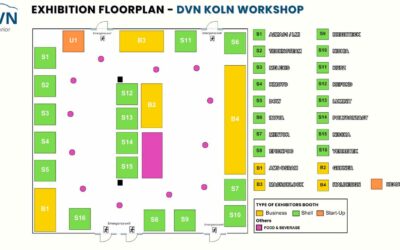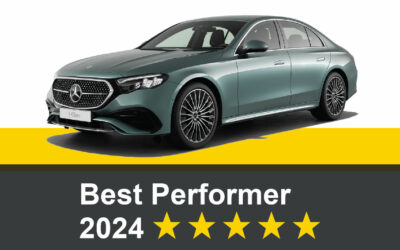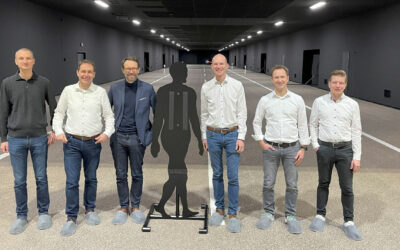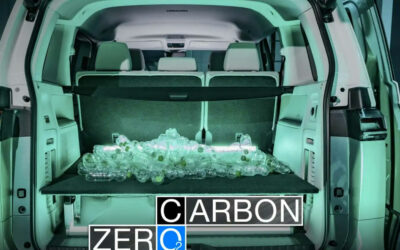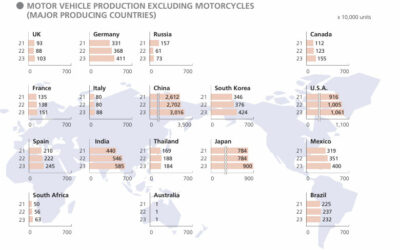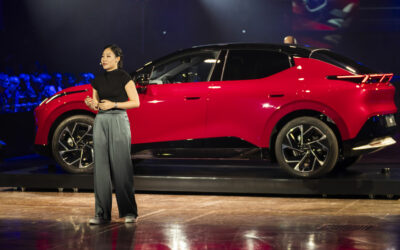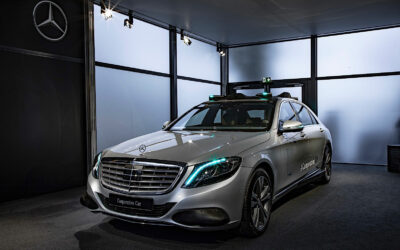By Paul-Henri Matha
I met Mino Yamamoto in an X-auto conference some months ago in Paris. She is X-auto President, in addition to her role at Valeo, and we talked about automotive industry challenges, particularly for our lighting industry. I had been thinking about dedicating a long session to sustainability and circularity at a future DVN event. After my talk with Yamamoto, I was convinced I should do just that. In Munich this month we will have a half day dedicated to sustainability, with 12 lectures, and Mino will give the keynote speech.
DVN: Can you introduce yourself and your background?
Mino Yamamoto: I’m Mino, born during the Year of the Dragon and raised in France by two Japanese parents. My life motto is simple and straightforward: work hard, never give up, and have guts.
I hold an engineering degree from École Polytechnique and École Nationale des Ponts et Chaussées.
I started my career at Parrot where I managed various projects in marketing and R&D for consumer drones. Then, in 2017, I joined Valeo and held roles in Product Marketing and Research & Innovation, focusing on the future of 48V electrification and shaping the innovation roadmap. In 2020, I became Corporate Strategy Director, where I had the opportunity to design and implement Valeo’s Decarbonization strategy in collaboration with the Sustainability Department. This naturally led to the creation of Valeo’s Circular Economy Strategy (4R), a defining step in my career.
DVN: How did you come to be in charge of circularity? How does that role fit in at Valeo?
M.Y.: Actually, I had the great honour and opportunity to build Valeo’s circular economy strategy, which led to the creation of my current role at the beginning of 2023.
At Valeo, sustainability is in our DNA. We are committed to supporting the UN Sustainable Development Goals, addressing critical environmental, social, and societal challenges. To tackle the two major issues of our time—climate change and resource scarcity—Valeo have launched two interconnected environmental programs: CAP50 for decarbonization, and a complementary circular economy strategy.
At Valeo, our circular economy mission is crystal clear: extend the lifespan of products to preserve their value and reduce resource consumption. To achieve our ambition, we developed our 4Rs framework: Robust Design, Repair, Remanufacturing & Recycled.
This framework is deployed across three key areas:
- Business: Scaling up our circular aftermarket by leveraging repair and remanufacturing to expand the lifespan of products already in circulation
- Conception: Innovating through robust design to expand the life of the future generation of products to unlock circularity
- Operations: Enhancing resource efficiency at our sites by reducing waste, conserving water, and building an ecosystem for recycling.
DVN: Circularity is not really well organized in Europe right now; do you foresee evolution?
M.Y.: First and foremost, we need to raise awareness about the true goals of the circular economy. Today, circularity is very often associated with recycling, but we can do much better! Why recycle a product when most of its components are still working, and it could be given a second life instead?
Our priority should be to extend the lifespan of products and maximize their use before considering a return to raw materials. Recycling should be the last resort, not the first solution. This mindset needs to shift. Now, the key challenge lies in building the right ecosystem to scale up the circular economy. To achieve this, we need to secure three critical steps: infrastructure, inputs, and circulation.
First, we must establish a structured collection network to recover end-of-life parts, or « cores, » which are the “fuel”’ of the circular economy.
Second, these cores must be valued appropriately to ensure they are collected for reuse, rather than being shredded back into raw materials.
Finally, cores need to move freely across borders, from the collection points to the facilities where they can be given a second life.
Building this ecosystem requires collaboration with regulators, collectors, and recyclers to align efforts and create a sustainable circular economy framework. This presents a significant opportunity for Europe, as it goes beyond environmental challenges to also address issues of sovereignty. Today, we are at the beginning of the story and we have a great opportunity to be the actors of this transformation. I feel great momentum; let’s do it!
DVN: So Valeo are taking concrete steps toward circularity in lighting?
M.Y.: Of course, we are acting. Valeo are committed to doubling our remanufacturing capacity from 1 to 2 million units per year by the end of this decade. Since launching our 4R programs, we’ve been expanding our Reman range to support the transformation of the car parc. Now, we’re accelerating even further with our Reman 2.0 strategy. We have already launched three new products to our Reman portfolio: the world’s first remanufactured front camera, and two new circular services designed for small mobility solutions, because remanufacturing will go way beyond cars! And of course, Headlamps are part of our Reman 2.0 roadmap and you’ll be hearing more from us very soon!
We’re also driving innovation to make headlamps even more circular. We already have headlamps with removable lens in production. More innovations are of course in the pipe. However, I can’t share the details just yet.
Finally, we are committed to the development of the right ecosystem for recycled materials for lighting, which is a very specialized area. We have already validated technical solutions using representative serial products, showcasing our expertise in selecting the best feedstocks and partners in the Oreplast 3 funded project. Materials engineering demands both expertise and innovation, and at Valeo, we are committed to leading the way by developing a robust and sustainable ecosystem.
DVN: Do you see interest in Asia and America, too? Toyota have been using lighting with exchangeable components…
M.Y.: Absolutely, the circular economy is a global movement! It’s one of the defining transformations of this decade, with growing momentum in Asia and America as well.
In the USA, for example, the market for remanufactured headlamps, particularly for halogen technology, is quite well-established. It provides cost-effective and environmentally friendly alternatives to new OE parts while offering higher-quality solutions compared to generic aftermarket options.
The next steps are to develop the remanufactured headlamps for led technology and Valeo are actively involved in this initiative; exciting announcements will follow!
In Japan, Toyota already offers headlamps with exchangeable outer lenses. Other Japanese automakers are also actively working on design for recyclability strategies, with ensuring easy separation of materials to develop a closed-loop plastic system. Valeo have strong concepts to support these initiatives for lighting products.
Finally, in China, driven by the strong demand for large illuminated panels, automakers are starting to explore repairable designs to recover and replace high-value components. Obviously, Valeo offer innovative solutions to support these needs.
DVN: You’ll be giving a keynote speech at DVN Munich. What will be your message?
M.Y.: Circularity and sustainability are critical challenges for the automotive and mobility industry, and they are happening right now. The lighting ecosystem plays a crucial role across the entire lifecycle by:
- extending the lifespan of headlamps already in circulation through repair and remanufacturing. This ensures good-as-new performance and quality, while reducing costs for both the end user and the planet.
- innovating to make future headlamps more circular. Let’s keep pushing the boundaries of innovation!
- building the right infrastructure for the lighting specialized recycled material. Let’s work hand in hand between the private and public sector.
Collaboration between the private and public sectors is key, as it’s also about securing our sovereignty. Ultimately, it is about teamwork to create a win-win business model across the whole value chain to make circularity a reality.
DVN: How about the new EU norm coming in 2030, how will it change our mindset?
M.Y.: The upcoming European End-of-Life Vehicle (ELV) regulation, set to take effect in 2030, will impact how we approach vehicle design, manufacturing, and recycling, particularly in the lighting industry.
This new regulation requires a more holistic approach to circular economy principles, compelling automakers and suppliers to rethink their entire product lifecycle—from initial design to end-of-life treatment.
Key provisions for lighting include designing for the removal of specific components from ELVs, such as printed circuit boards and wire harnesses. Headlamps and rear lamps will be subject to mandatory removal if shredding and post-shredding processes cannot extract and separate materials as efficiently as manual or semi-automated disassembly. This requirement also aims to facilitate remanufacturing activities.
Another proposed rule is related to the mandatory usage of postconsumer plastic waste from the automotive industry. According to the ELV directive, 6.25 per cent of plastic materials must be derived as automotive closed-loop plastics—meaning 20-year-old car plastic wastes will be serving as materials to build a new car. The plastics used in the lighting systems are not available in any other commodities of the vehicle, so it’s necessary to build the complete ecosystem and to master the complete value chain from car scrapyards to new parts.
With the regulation set to take effect in 2030, it is essential to act now by assessing its impact on existing products and implementing necessary changes. This will ensure readiness for upcoming vehicle developments, with SOPs aligned to the 2030 timeline.
Ultimately, this regulation serves as a catalyst for innovation across the entire automotive lighting industry.
